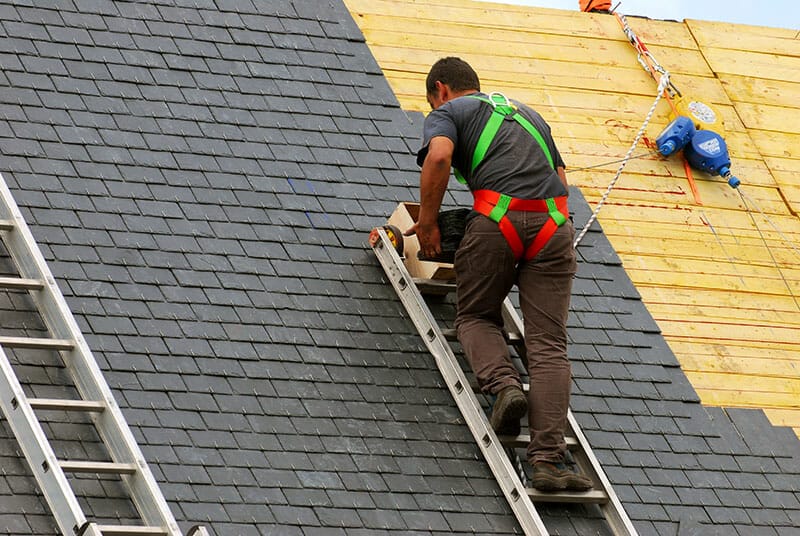
Image Source – Google
Weather can have a significant impact on the health and longevity of your shingle roof. From scorching sun to freezing temperatures, heavy rain, and powerful winds, your roof is constantly exposed to the elements. Understanding how weather can affect your shingle roof can help you take preventative measures to prolong its lifespan and avoid costly repairs.
One of the most common ways weather can damage your shingle roof is through sunlight exposure. Ultraviolet (UV) rays from the sun can cause shingles to break down over time, leading to cracking, curling, and deterioration. This process, known as thermal shock, occurs when the sun heats up the shingles during the day, only to have them rapidly cool down at night. This constant expansion and contraction weakens the shingles and can eventually cause them to fail. Additionally, prolonged exposure to sunlight can cause shingles to fade in color, making your roof look worn and aged.
Extreme temperatures can also take a toll on your shingle roof. In hot climates, high temperatures can cause the asphalt in shingles to soften and lose their adhesive properties. This can lead to shingles becoming loose or even blowing off in strong winds. Conversely, in cold climates, freezing temperatures can cause shingles to become brittle and more susceptible to cracking. Ice dams can also form along the edges of roofs, leading to water infiltration and potential leaks.
Heavy rain and moisture are another weather-related threat to the health of your shingle roof. Water can seep under shingles, leading to rot, mold, and mildew growth. It can also cause the wood decking beneath the shingles to warp and deteriorate. If left unchecked, water damage can compromise the structural integrity of your roof and lead to costly repairs. In addition, standing water on your roof can attract pests, such as mosquitoes and termites, which can further damage your roof and pose health risks.
Strong winds are another weather factor that can impact the health of your shingle roof. Wind can lift and loosen shingles, making them more susceptible to water infiltration and damage. It can also blow debris, such as branches and leaves, onto your roof, causing scratches and punctures. In severe cases, high winds can even tear off entire sections of shingles, leaving your roof vulnerable to leaks and further damage.
Hail is another weather phenomenon that can wreak havoc on shingle roofs. Hailstones can range in size from small pellets to large balls, with larger hailstones causing more significant damage. When hail impacts shingles, it can dislodge granules, create dents and divots, and even puncture the shingles. This damage can compromise the protective layer of your roof and leave it vulnerable to leaks and water damage.
To protect your shingle roof from the damaging effects of weather, there are several preventative measures you can take. Regular roof inspections can help identify and address any issues before they escalate. Keeping your gutters clean and free of debris can prevent water from pooling on your roof. Trimming overhanging tree branches can reduce the risk of damage from falling limbs during storms. Additionally, investing in high-quality shingles that are designed to withstand the local climate can help prolong the lifespan of your roof.
In conclusion, weather plays a significant role in the health of your shingle roof. From sunlight and extreme temperatures to rain, wind, hail, and more, your roof is constantly exposed to the elements. Understanding how weather can impact your roof and taking proactive steps to protect it can help extend its lifespan and prevent costly repairs. By staying vigilant and addressing issues promptly, you can ensure that your shingle roof remains strong and secure for years to come.